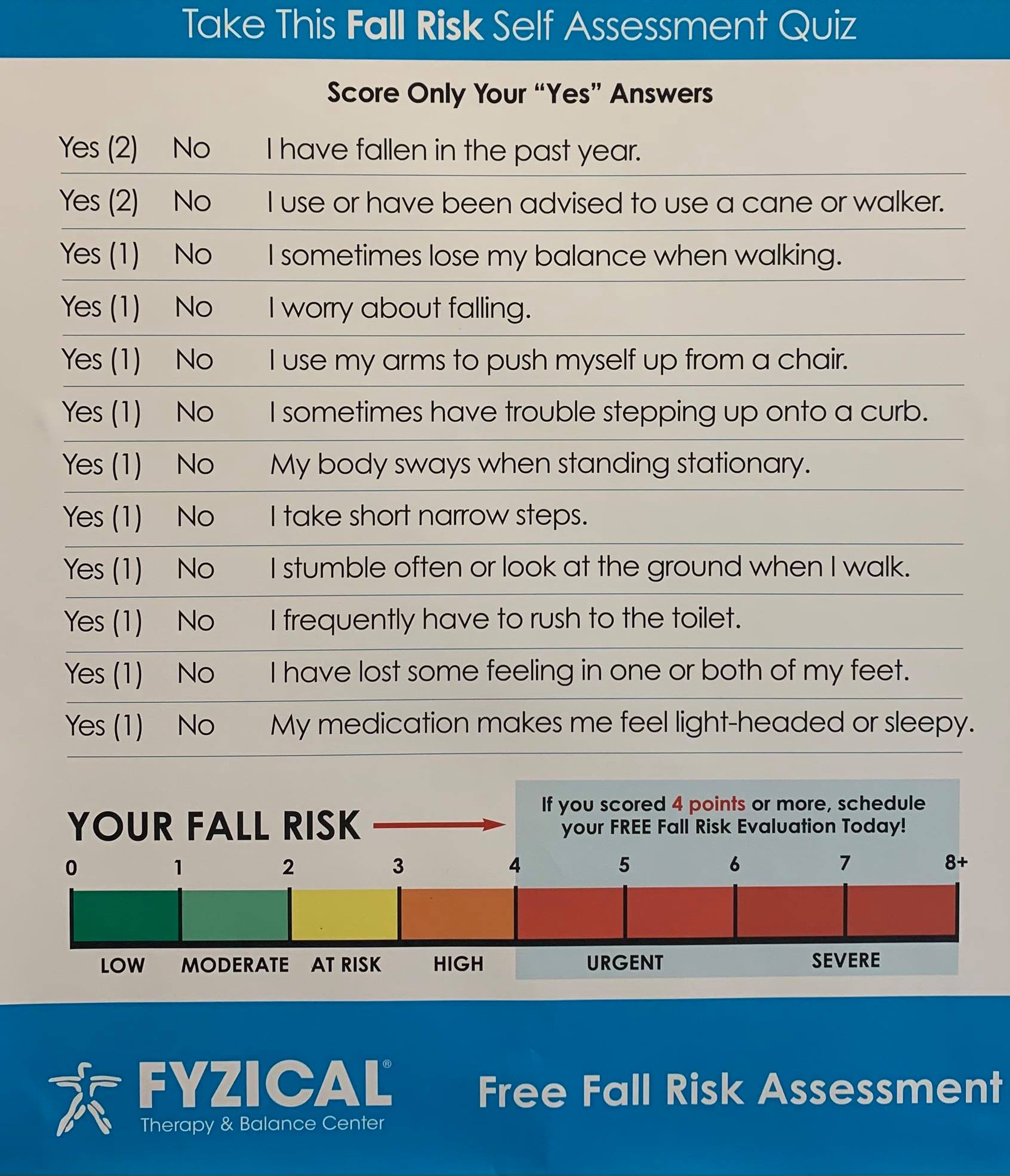Getting The Dementia Fall Risk To Work
Getting The Dementia Fall Risk To Work
Blog Article
Dementia Fall Risk Fundamentals Explained
Table of ContentsThe smart Trick of Dementia Fall Risk That Nobody is DiscussingThe 30-Second Trick For Dementia Fall RiskThe 6-Second Trick For Dementia Fall RiskSome Of Dementia Fall Risk
An autumn threat evaluation checks to see exactly how most likely it is that you will certainly fall. It is primarily done for older adults. The analysis usually includes: This consists of a collection of questions regarding your total wellness and if you have actually had previous falls or issues with equilibrium, standing, and/or strolling. These tools check your toughness, balance, and gait (the method you stroll).STEADI includes screening, analyzing, and treatment. Treatments are referrals that might lower your threat of dropping. STEADI consists of 3 steps: you for your danger of dropping for your threat factors that can be improved to attempt to protect against drops (for instance, equilibrium issues, impaired vision) to reduce your threat of dropping by making use of reliable approaches (for instance, giving education and learning and sources), you may be asked numerous concerns including: Have you fallen in the past year? Do you really feel unstable when standing or strolling? Are you fretted regarding falling?, your company will evaluate your strength, equilibrium, and stride, utilizing the following fall analysis devices: This test checks your gait.
You'll sit down once again. Your company will examine how lengthy it takes you to do this. If it takes you 12 seconds or more, it might imply you go to higher danger for a loss. This test checks toughness and balance. You'll being in a chair with your arms went across over your breast.
The settings will obtain more difficult as you go. Stand with your feet side-by-side. Move one foot midway forward, so the instep is touching the huge toe of your various other foot. Move one foot completely before the other, so the toes are touching the heel of your other foot.
Little Known Facts About Dementia Fall Risk.
Many falls occur as an outcome of several adding variables; as a result, handling the risk of dropping begins with identifying the elements that add to drop threat - Dementia Fall Risk. A few of the most relevant threat elements consist of: History of prior fallsChronic clinical conditionsAcute illnessImpaired gait and equilibrium, reduced extremity weaknessCognitive impairmentChanges in visionCertain high-risk drugs and polypharmacyEnvironmental aspects can additionally raise the danger for drops, including: Inadequate lightingUneven or harmed flooringWet or unsafe floorsMissing or damaged handrails and get hold of barsDamaged or poorly equipped tools, such as beds, wheelchairs, or walkersImproper use assistive devicesInadequate guidance of the people residing in the NF, consisting of those that display aggressive behaviorsA effective fall risk administration program needs a detailed medical analysis, with input from all participants of the interdisciplinary group

The care strategy should additionally include treatments that are system-based, such as those that advertise a secure atmosphere (proper lighting, hand rails, order bars, and so on). The effectiveness of the treatments need to be reviewed occasionally, and the treatment strategy changed as needed to show modifications in the autumn threat analysis. Executing a loss threat administration system utilizing evidence-based finest technique can minimize the prevalence of falls in the NF, while restricting the potential for fall-related injuries.
The Definitive Guide for Dementia Fall Risk
The AGS/BGS standard suggests screening all grownups matured 65 years and older for loss risk annually. This testing consists of asking clients whether they have actually fallen 2 or more times in the previous year or sought clinical interest for a fall, or, if they have not fallen, whether they really feel unstable when walking.
Individuals that have actually fallen when without injury needs to have their balance and stride examined; those with stride or balance abnormalities should get additional analysis. A history of look at here 1 fall without injury and without stride or balance troubles does not warrant further assessment past continued annual loss danger screening. Dementia Fall Risk. An autumn risk evaluation is called for as component of the Welcome to Medicare examination

The Of Dementia Fall Risk
Recording a drops history is one of the top quality indicators for loss prevention and monitoring. copyright medications in particular are independent predictors of falls.
Postural hypotension can commonly be reduced by minimizing the dose of blood pressurelowering medications and/or stopping medicines that have orthostatic hypotension as a side result. Use of above-the-knee assistance pipe and copulating the head of the bed boosted might also decrease postural decreases in high blood pressure. The suggested components of a fall-focused physical exam are displayed in Box 1.

A TUG time higher than or equal to 12 seconds recommends high loss threat. Being unable to stand up from a chair of knee elevation without utilizing one's arms suggests raised fall threat.
Report this page